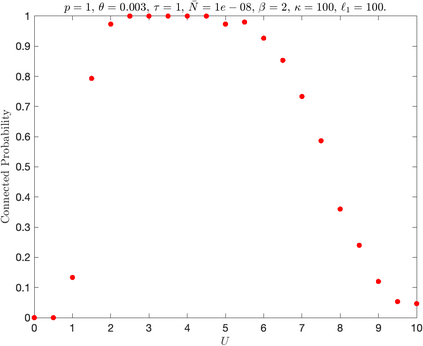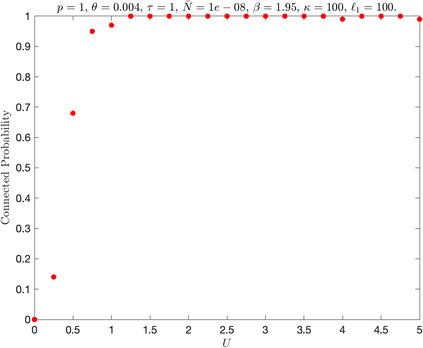To study the overall connectivity in device-to-device networks in cities, we incorporate a signal-to-interference-plus-noise connectivity model into a Poisson-Voronoi tessellation model representing the streets of a city. Relays are located at crossroads (or street intersections), whereas (user) devices are scattered along streets. Between any two adjacent relays, we assume data can be transmitted either directly between the relays or through users, given they share a common street. Our simulation results reveal that the network connectivity is ensured when the density of users (on the streets) exceeds a certain critical value. But then the network connectivity disappears when the user density exceeds a second critical value. The intuition is that for longer streets, where direct relay-to-relay communication is not possible, users are needed to transmit data between relays, but with too many users the interference becomes too strong, eventually reducing the overall network connectivity. This observation on the user density evokes previous results based on another wireless network model, where transmitter-receivers were scattered across the plane. This effect disappears when interference is removed from the model, giving a variation of the classic Gilbert model and recalling the lesson that neglecting interference in such network models can give overly optimistic results. For physically reasonable model parameters, we show that crowded streets (with more than six users on a typical street) lead to a sudden drop in connectivity. We also give numerical results outlining a relationship between the user density and the strength of any interference reduction techniques.
翻译:暂无翻译





















